ABC | Phnom Penh’s water people
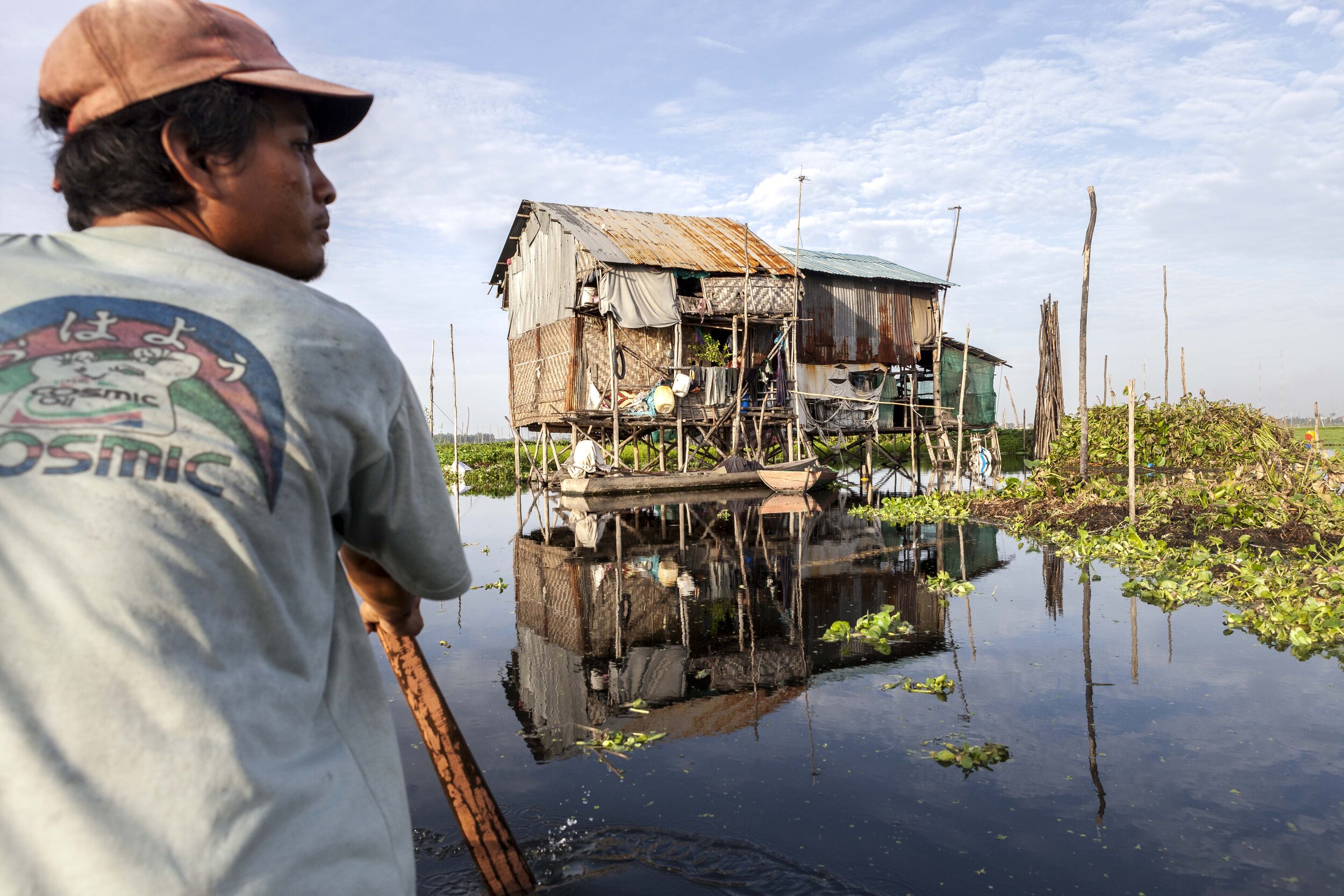
Some residents of Boeng Tompun live in stilt houses entirely surrounded by the lake water, and commute by canoe to work, school, and markets.
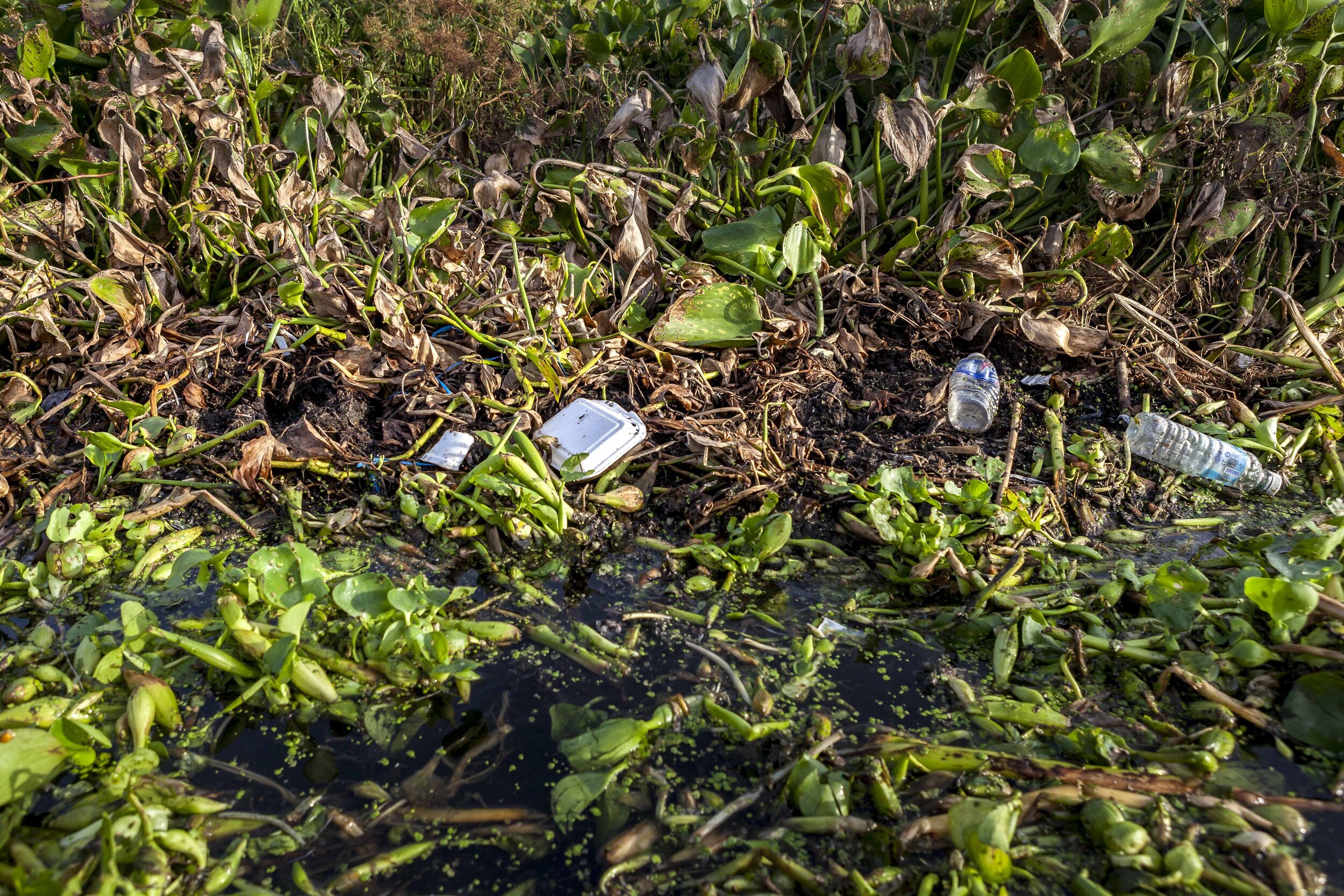
Rubbish mixed in with the water weed on Boeng Tompun lake. Local needs are under resourced, but they also have the rubbish and sewage runoff from the city to contend with.
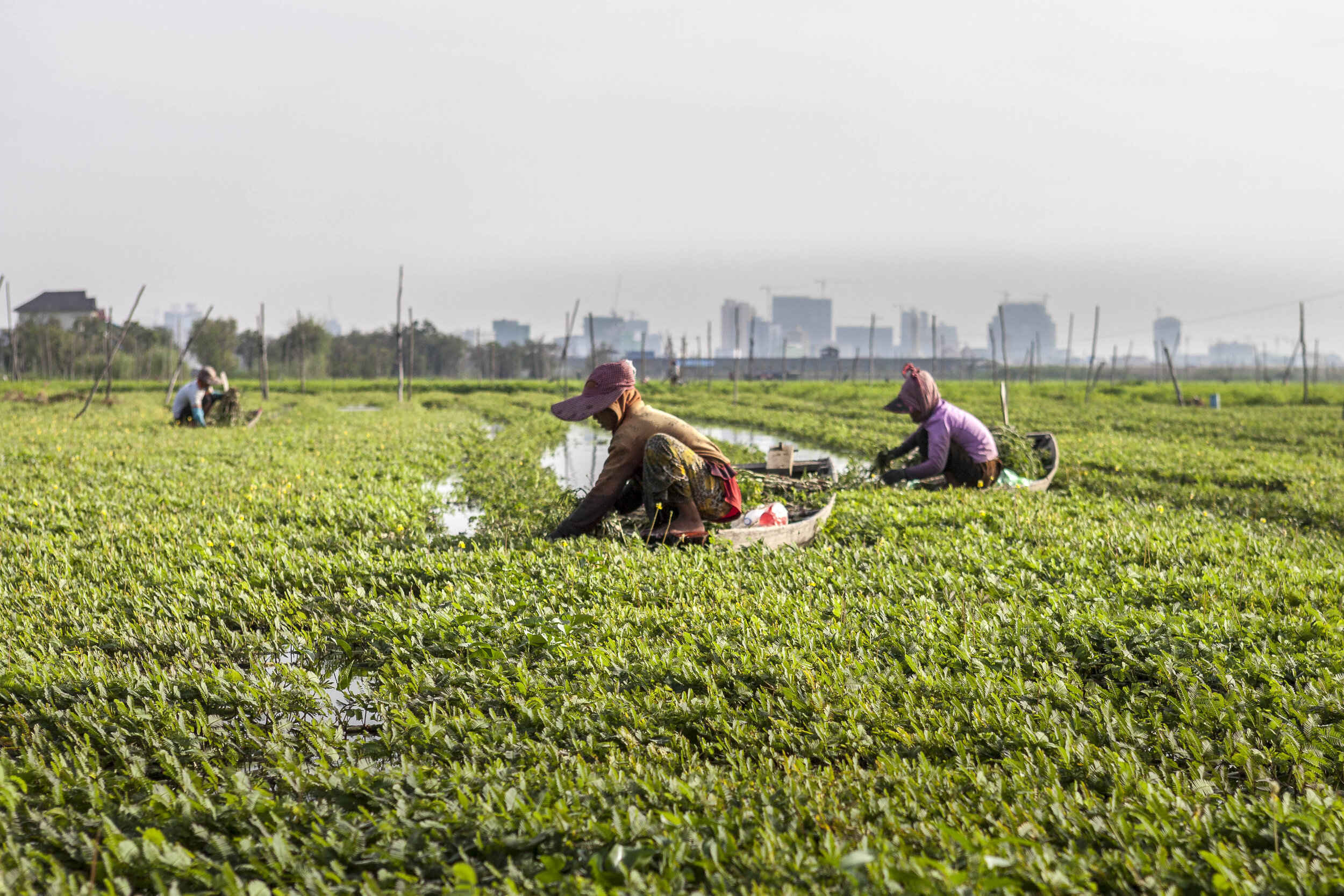
Starting with the first light of the morning, women work at harvesting mimosa and morning glory from rope lines on the lake.
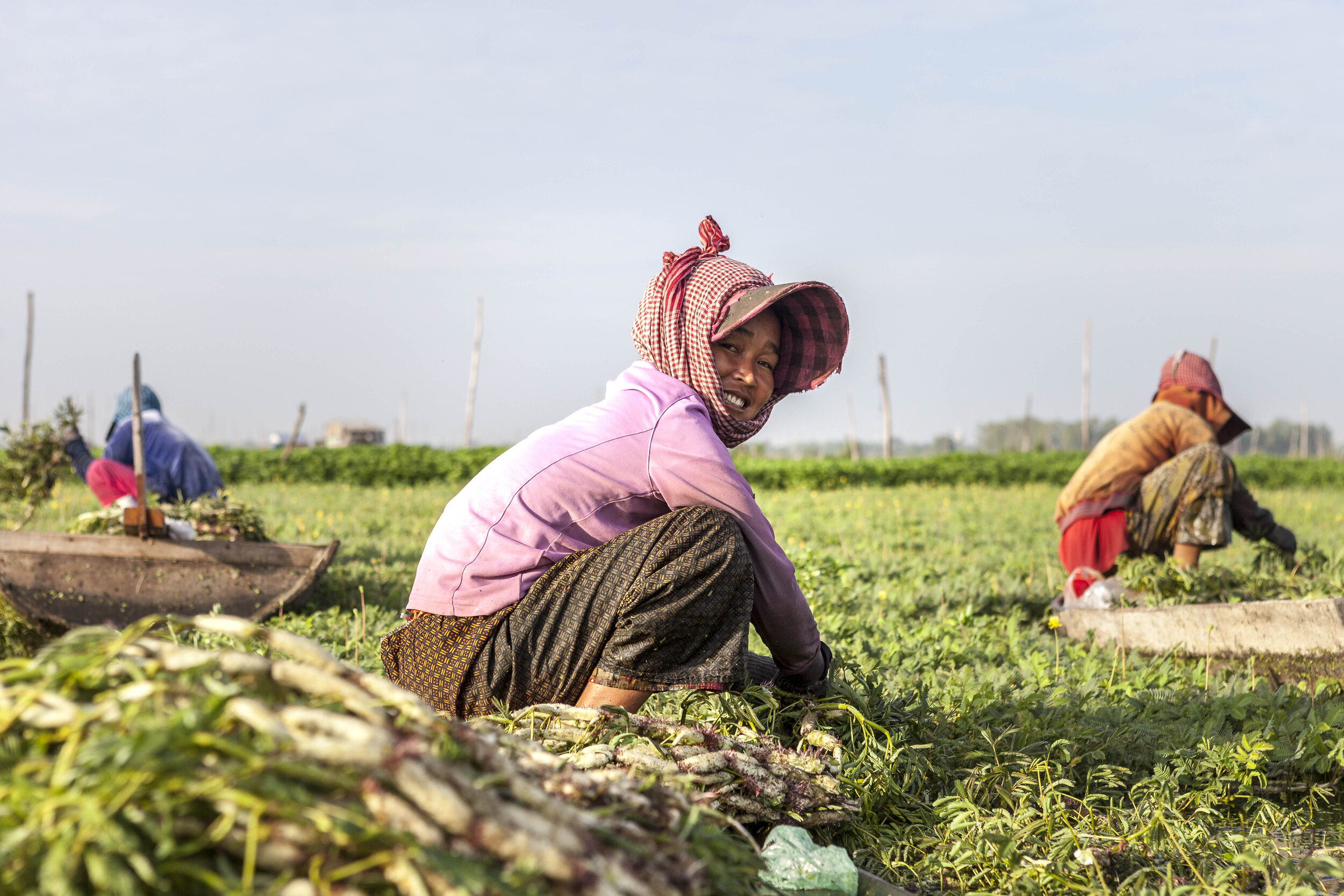
Sok Pov is a mother of four, and has been working picking vegetables from the lake for ten years. Though it causes skin irritation now, Pov recalls a time when the water was clean enough to bathe in.

Women at work harvesting water mimosa on Boeng Tompun.
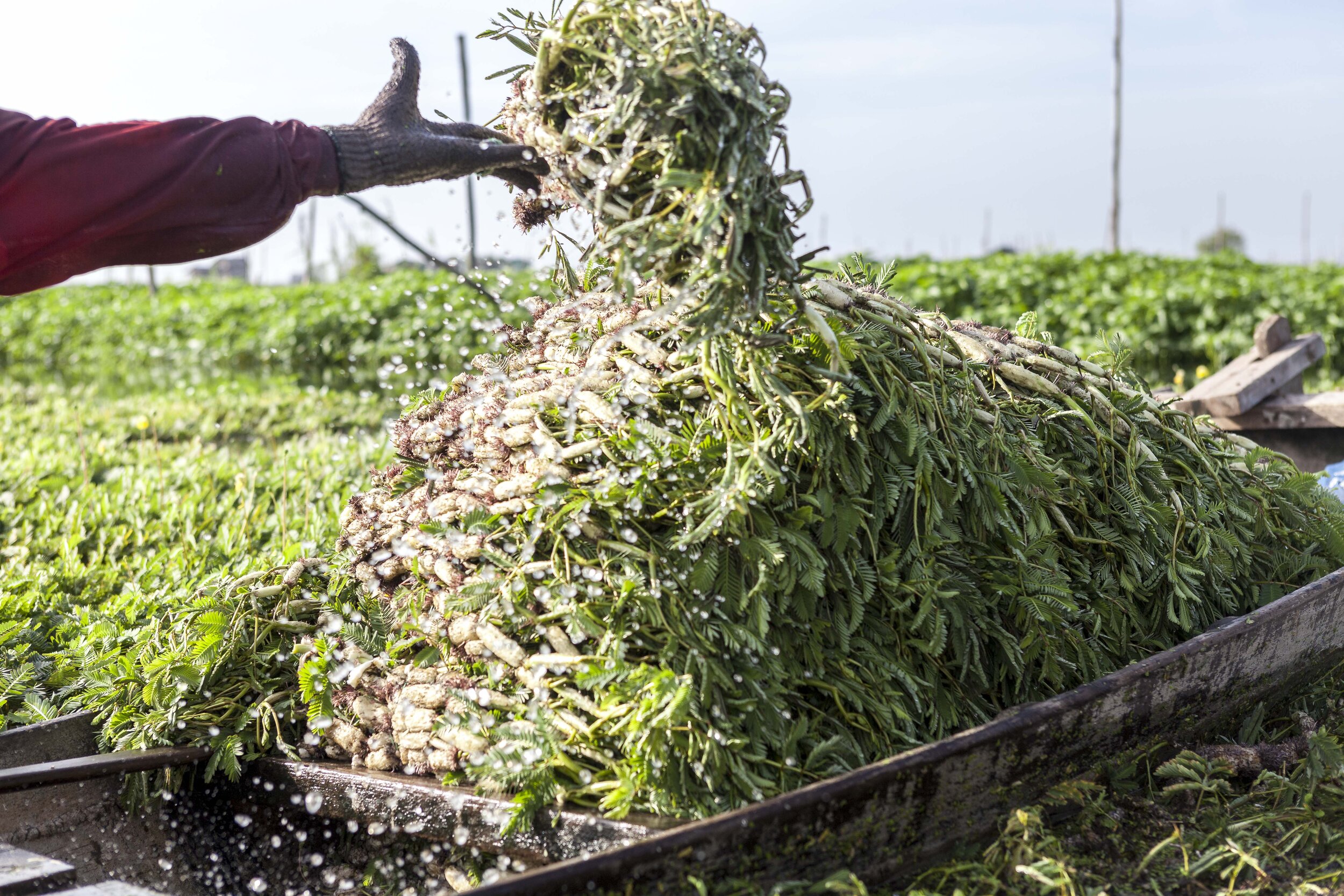
Water mimosa grows quickly , forming a thick carpet over waterways, and is a popular vegetable crop in Cambodia.

44 year old Srey Neuk has lived in Prek Takong village since 1997, bearing witness to the growing city and the changing environment.
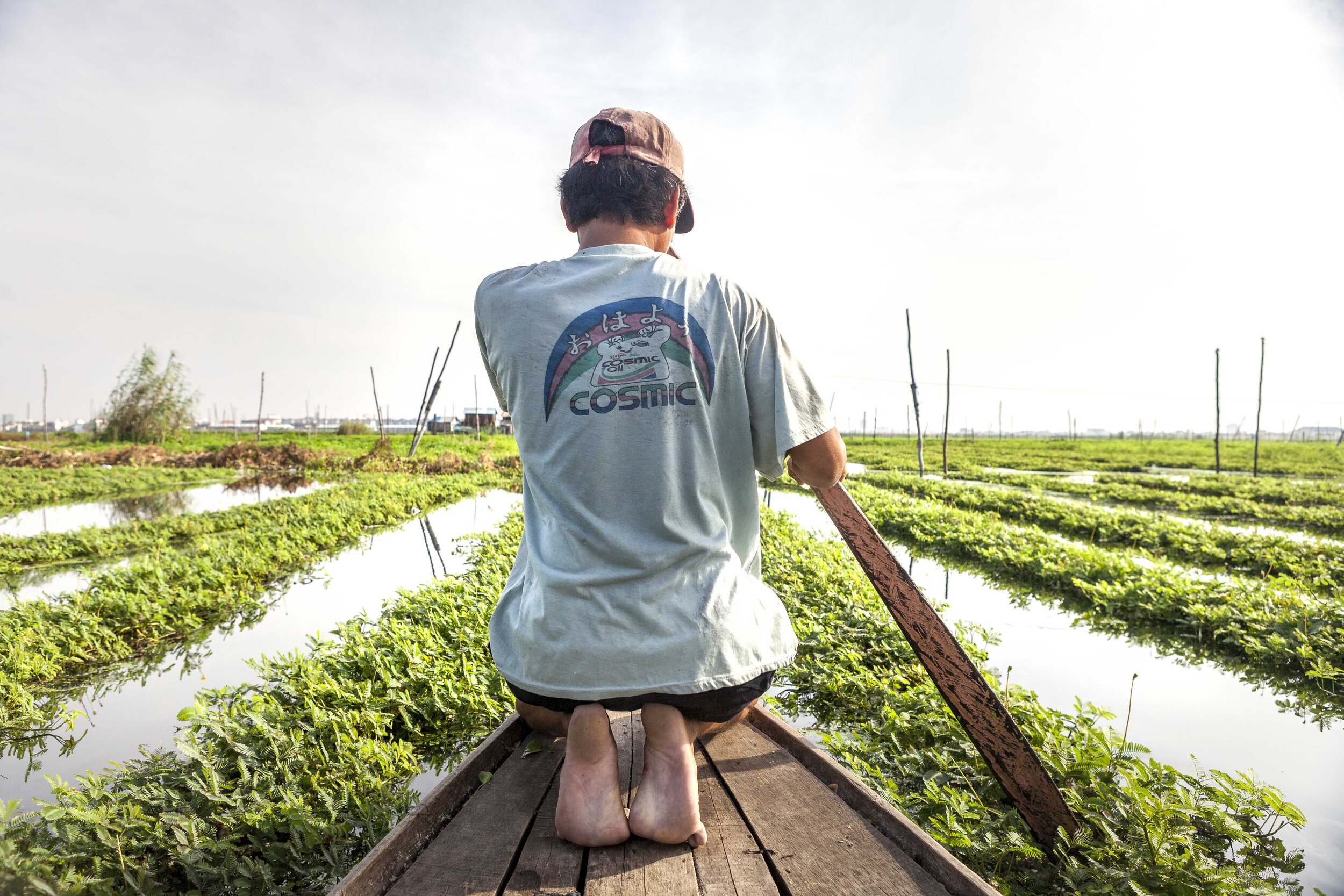
Boeng Tompun originally covered 2600 hectares south of Phnom Penh. ING City development plans include just 560 hectares of reservoir.
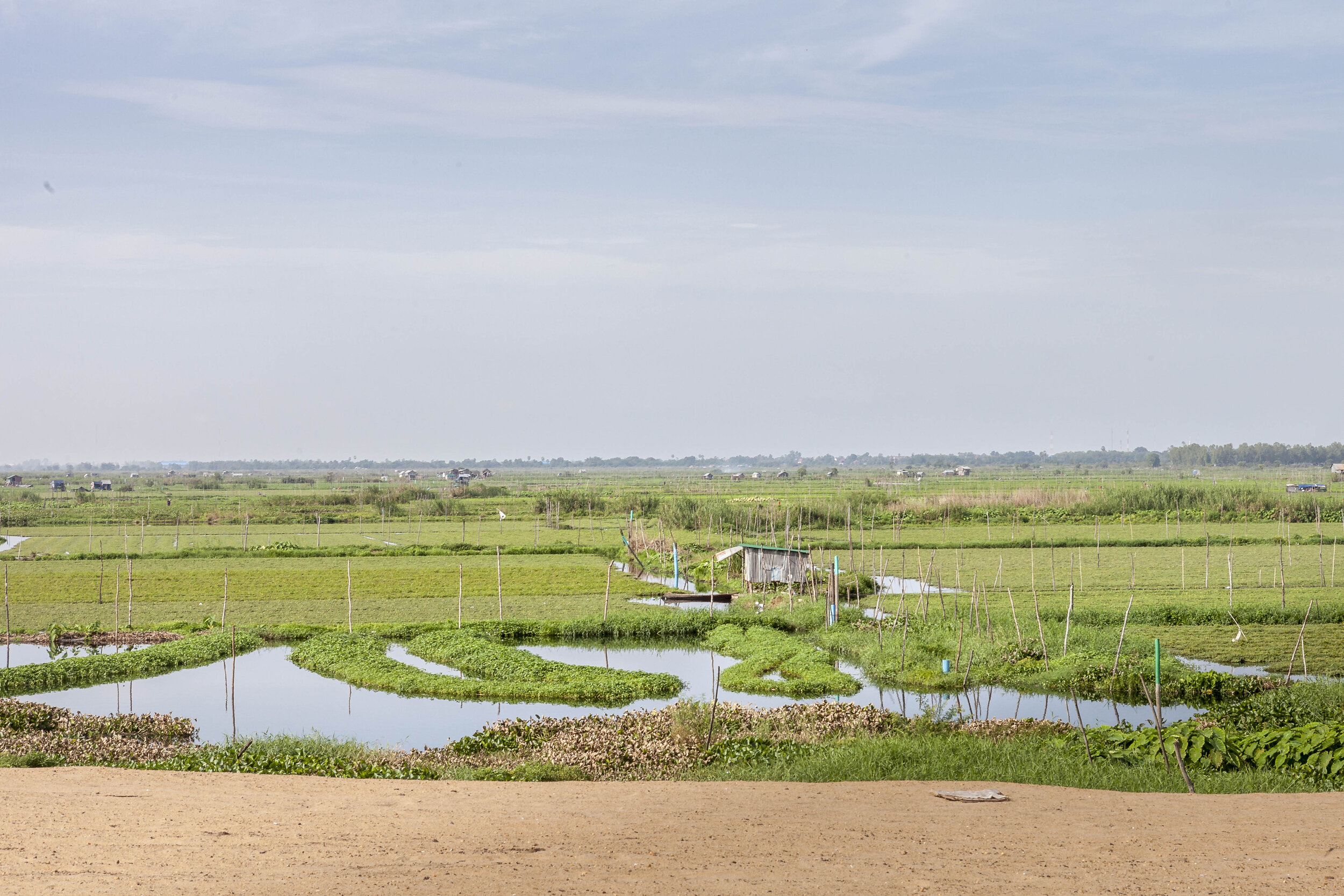
A view across Boeung Tompun from an area newly ‘reclaimed’ by sand-pumping.
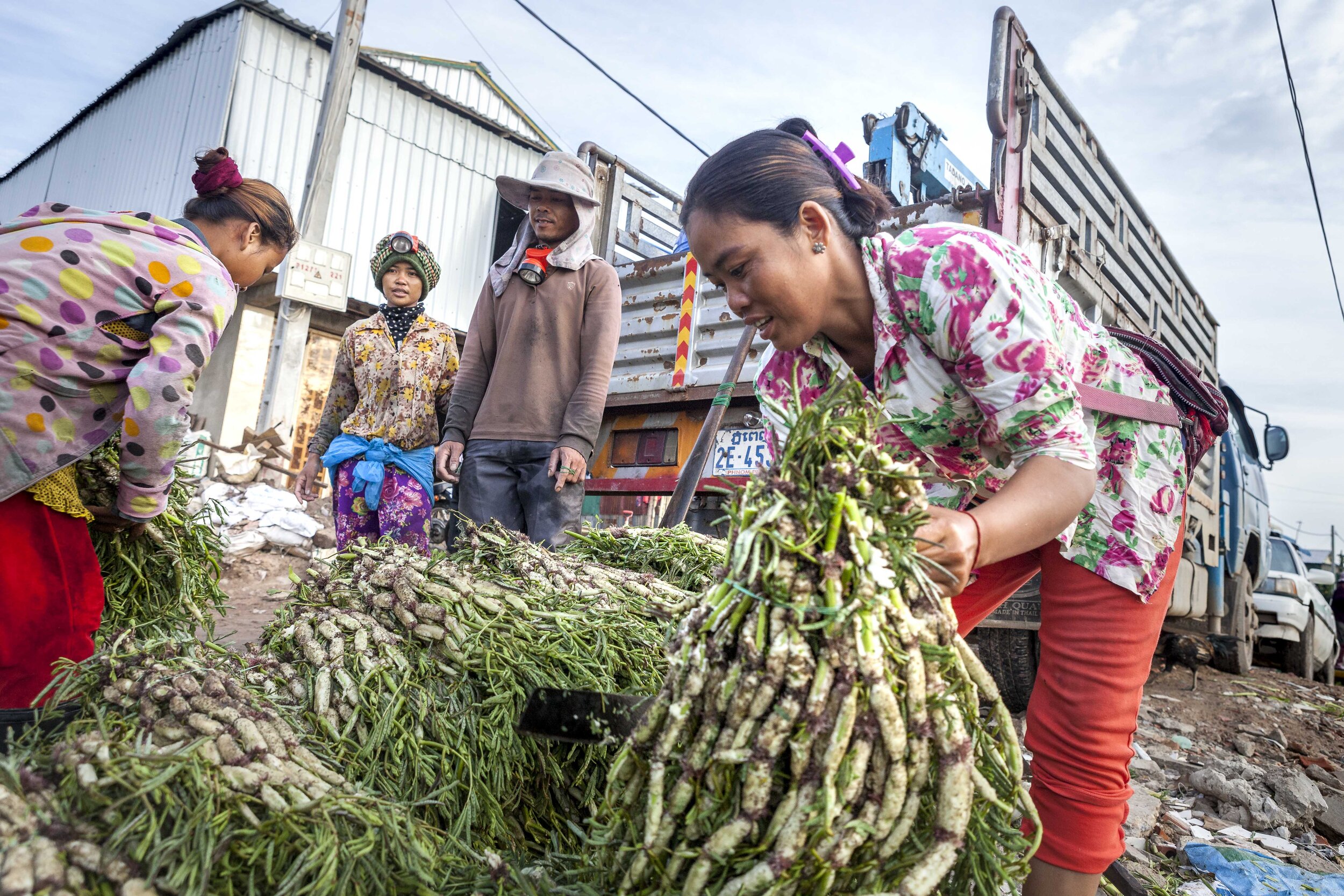
Cutting and bundling water mimosa for sale.
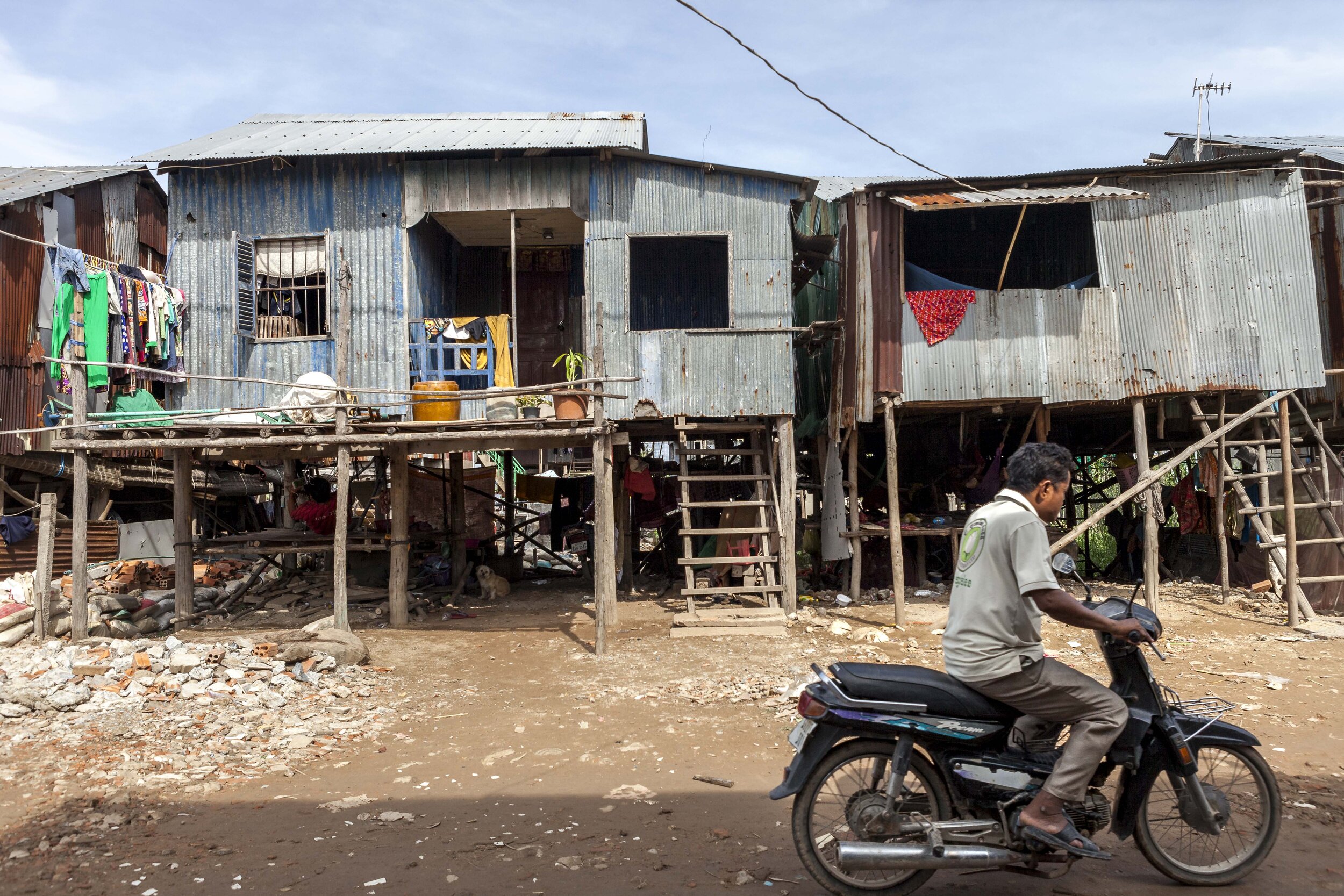
Homes in Boeng Tompun commune.
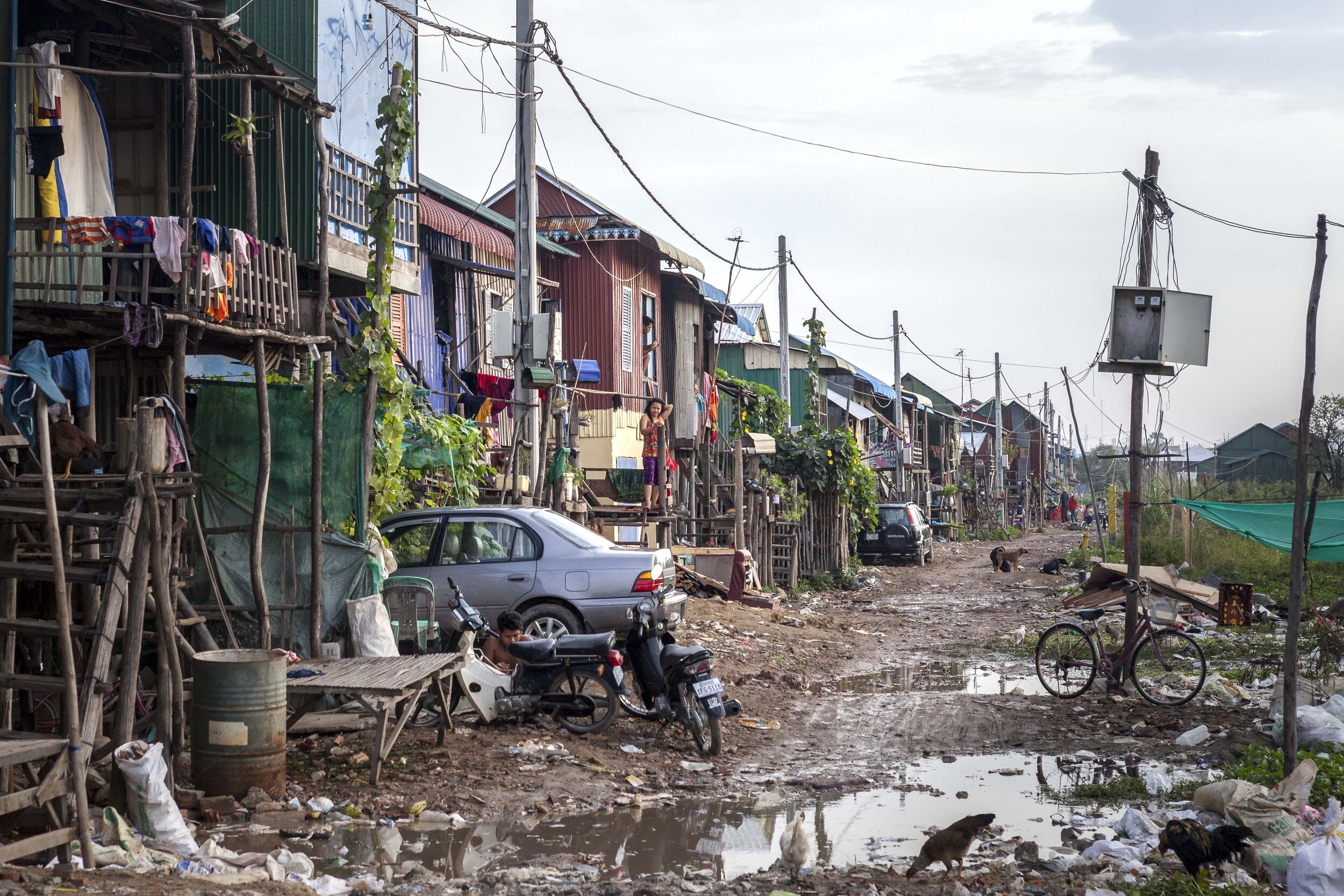
The peninsula that juts into Beong Tompun lake is just wide enough for rough road access and a single line of stilt houses in Prek Takong village.
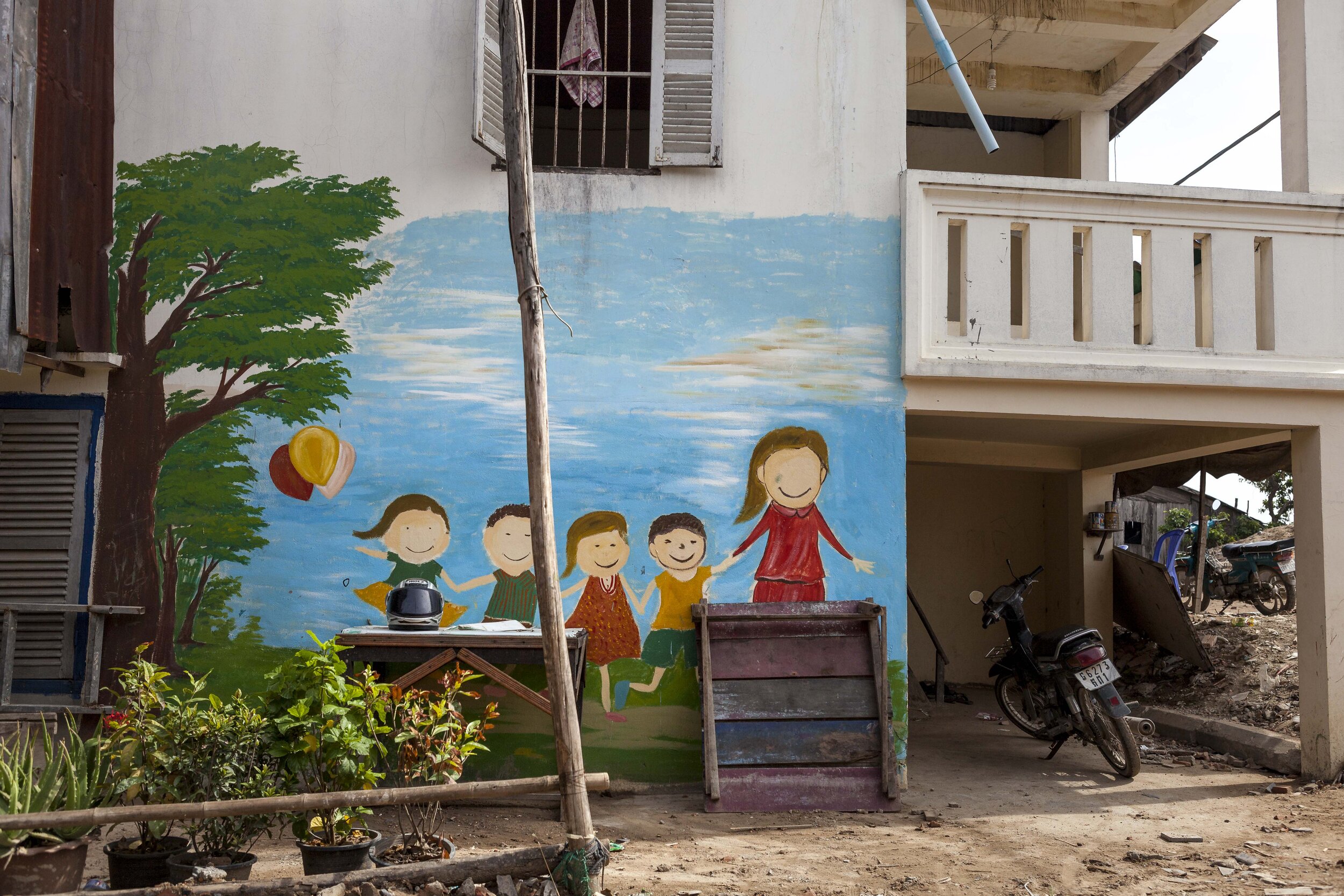
A mural in Prek Takong village, in the Boeng Tompun commune.
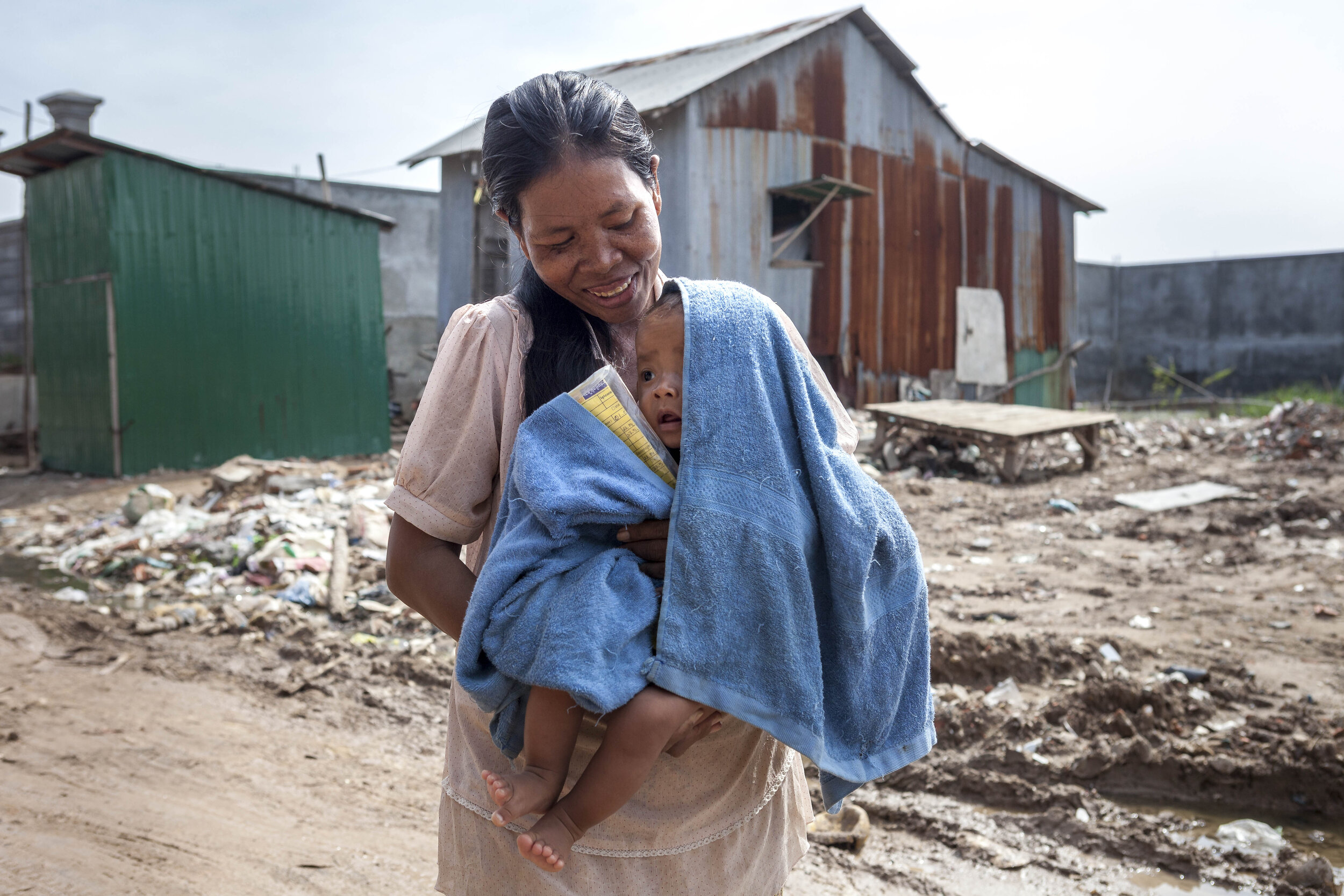
Residents of Boeng Tompun commune.

A concrete wall at the edge of the current sand landfill, with a Prek Takong home on the other side.
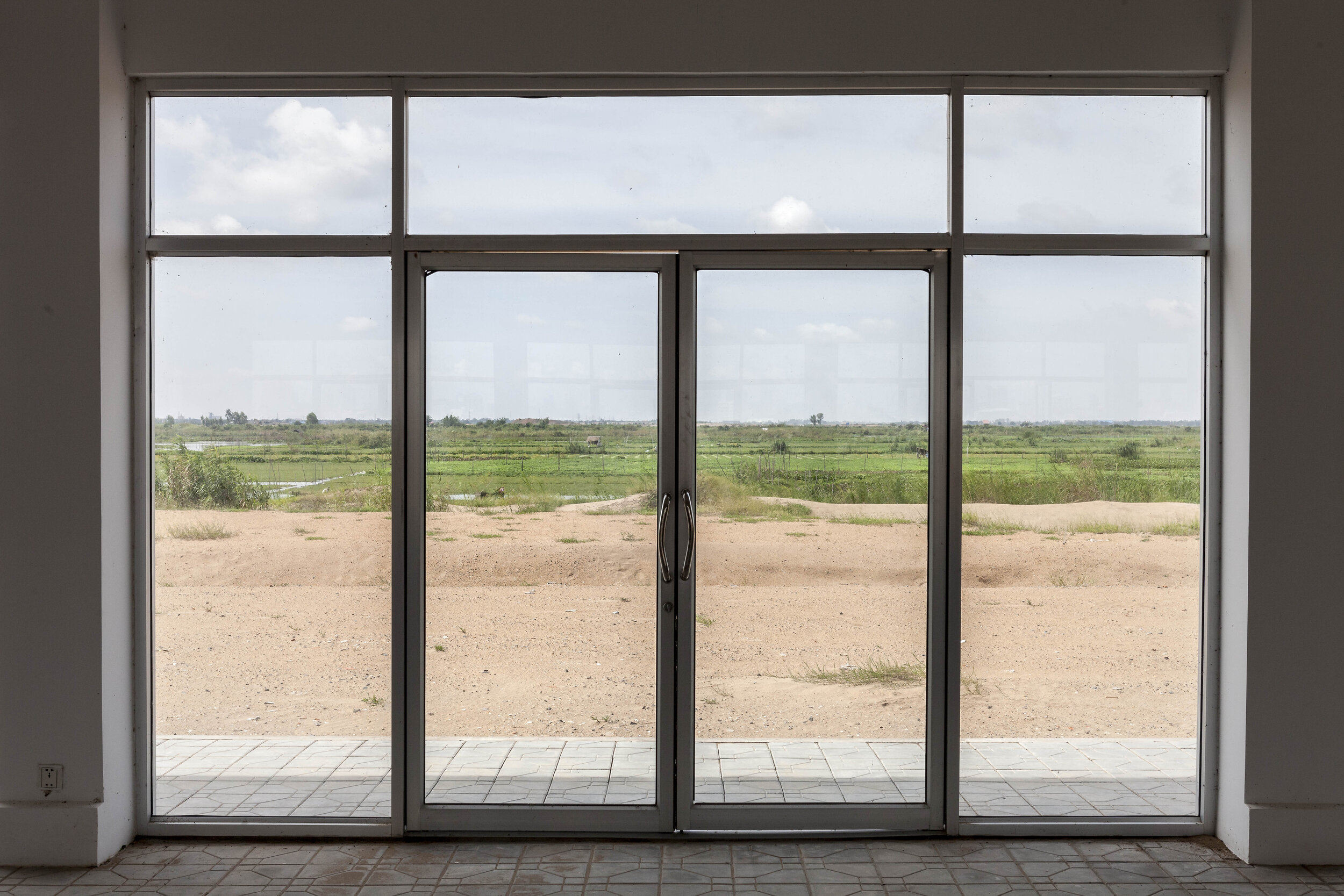
The view southward from an ING Holding’s office looks across a sand-filled portion of the lake to the produce covered expanses that remain.
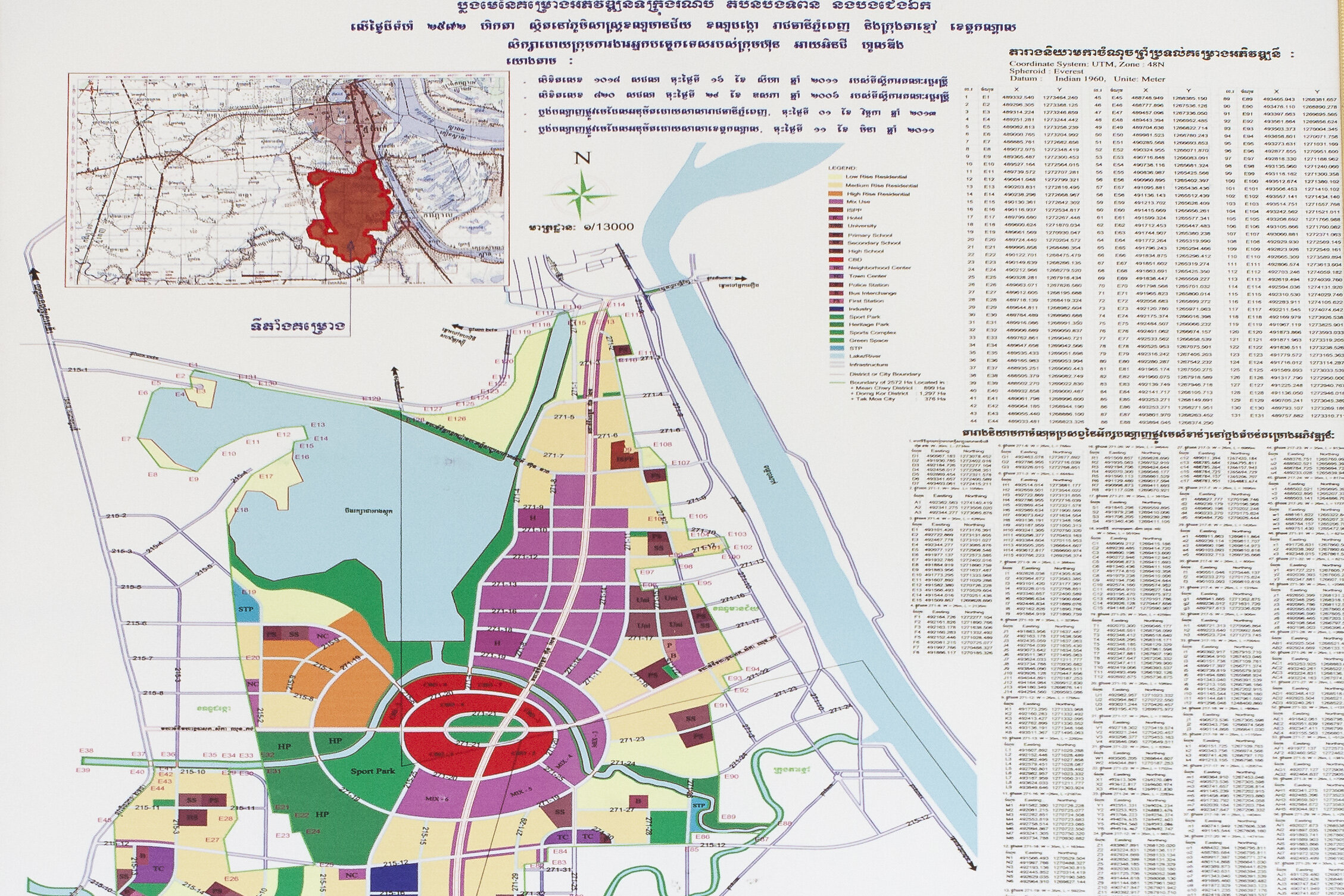
A map on the wall of ING Holdings office, showing plans for the Boeng Tompun lake area once it has been filled and re-purposed.
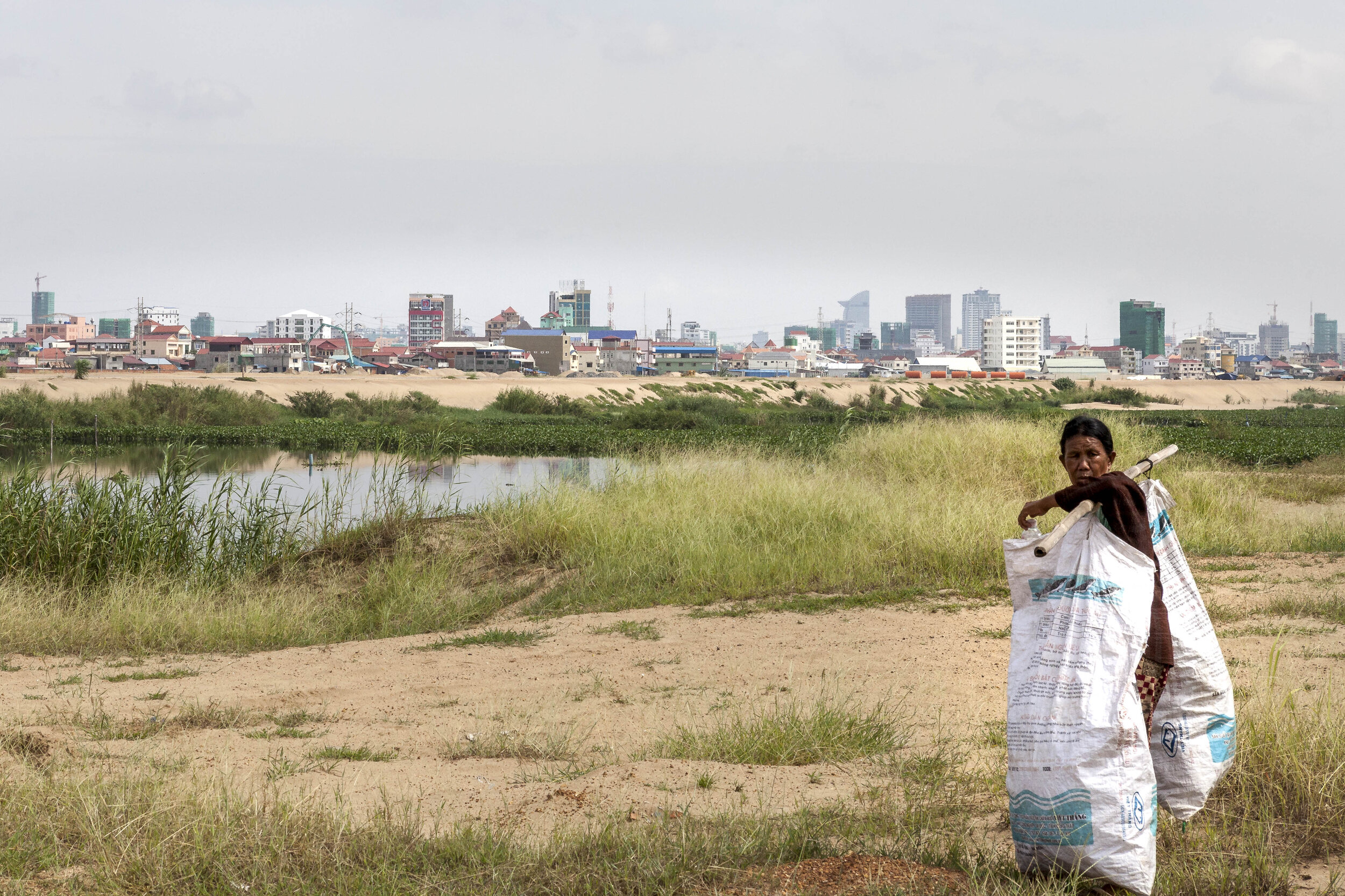
A woman collects plastic rubbish, with the Phnom Penh skyline and a filled portion of the lake behind her.
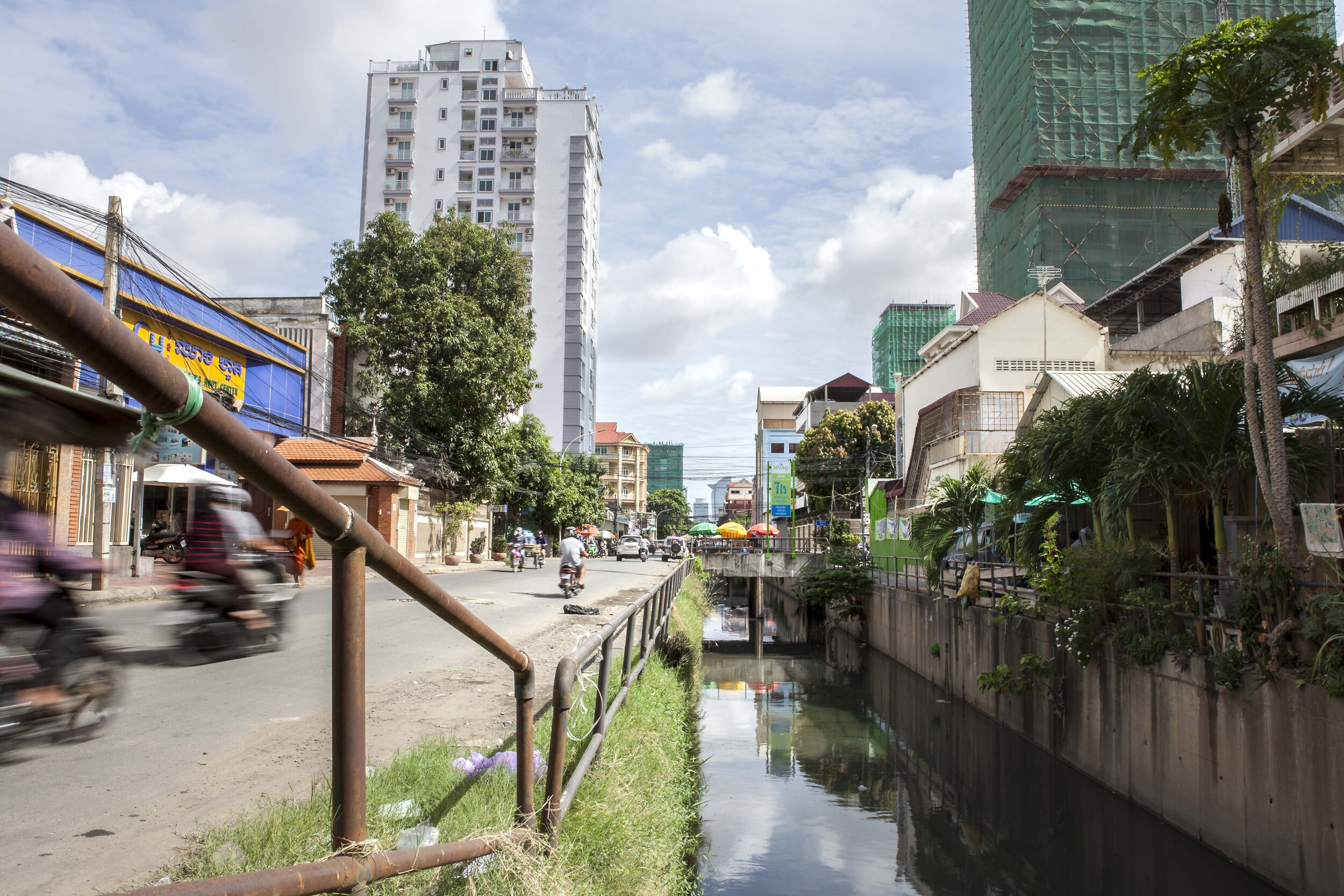
The open canal of refuse and waste which flows south for three kilometres through Phnom Penh city.
For decades, the lakes and wetlands around Cambodia’s capital city have supported the livelihoods of thousands of farmers and fishers. Now, Phnom Penh is in the grip of a real estate explosion, and the thirst for more dry land threatens their homes and their incomes.
The once huge chain of wetlands which served as the region’s natural flood mitigation and water filtration system, as well as it’s food bowl has methodically been subsumed. Now, a deep open drain of sewage and runoff cuts through the city streets from north to south, leaving behind glass towers and blocks of condos as it merges with Boeung Tompun (Lake Tompun), just three kilometres to the south of the city centre.
Those eking out a living on Boeung Tompun have found themselves on the edge of the largest development in the country; a multi-million-dollar project known as ING City. As the sand-pumping draws nearer the locals face eviction, and with no certainty that they will receive adequate- if any- compensation for the land being taken from them.
Photographed in 2016 for the article 'Cambodia's water people pushed out of Phnom Penh sewer for billion-dollar ING City' by freelancer, Will Jackson. Published by the ABC in 2017.